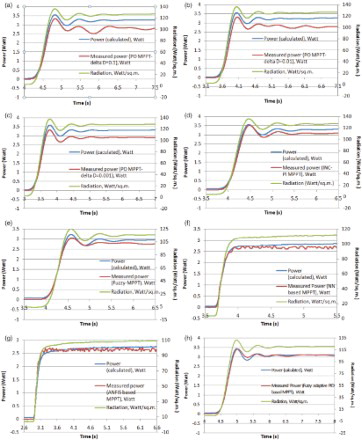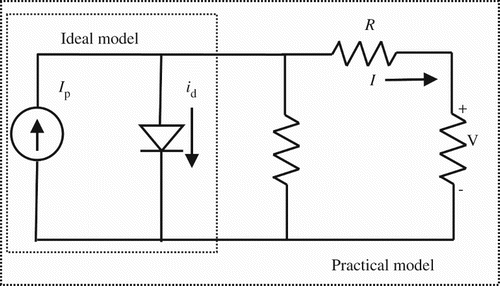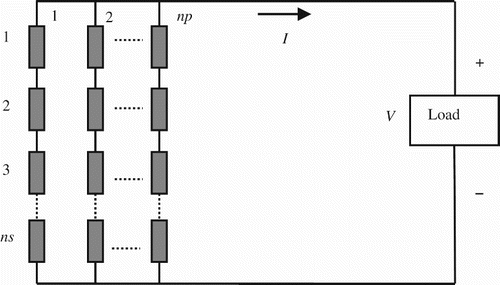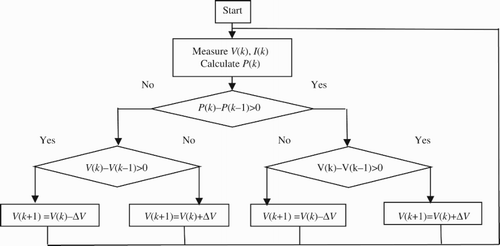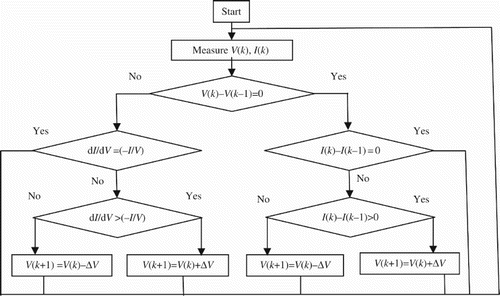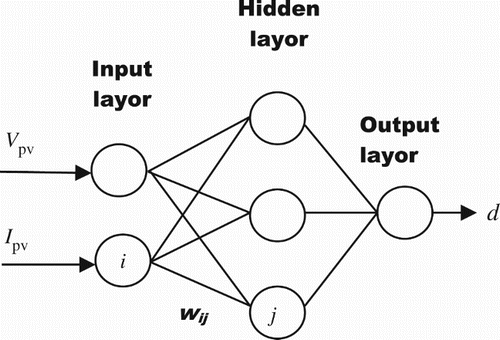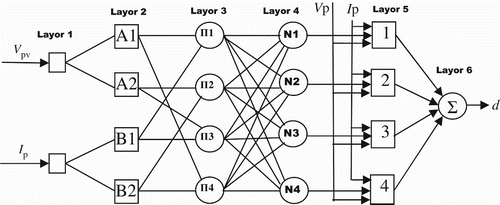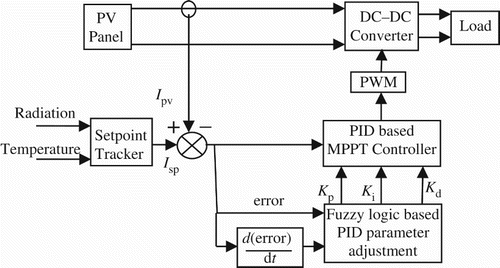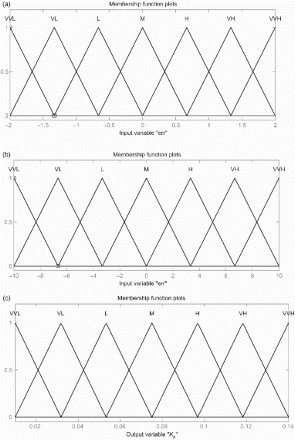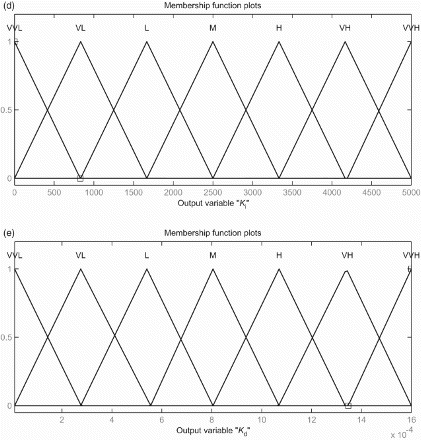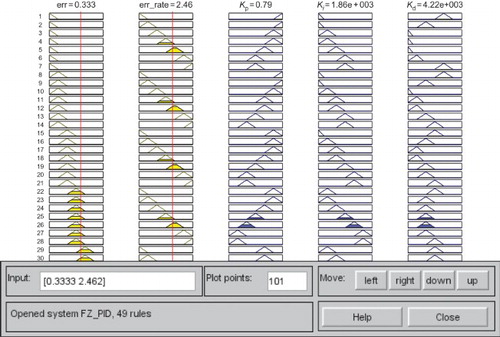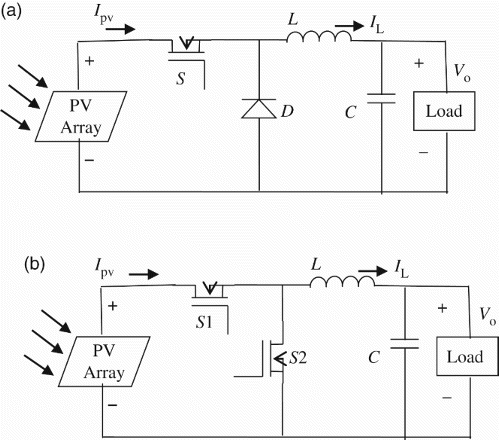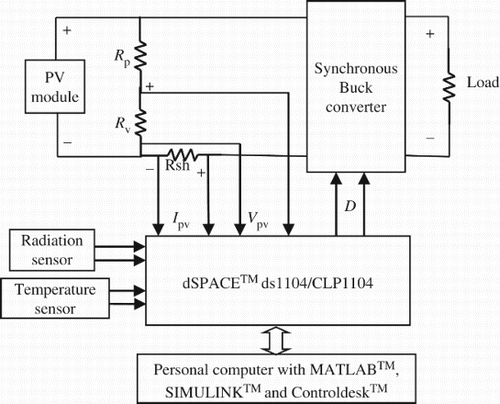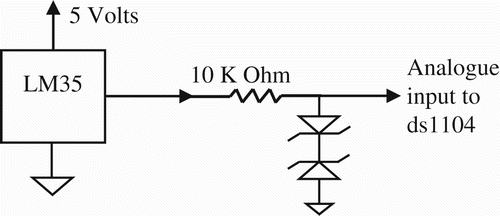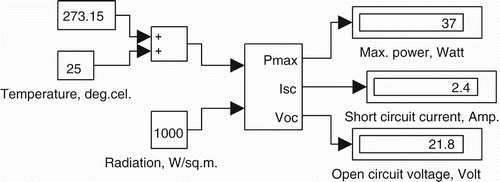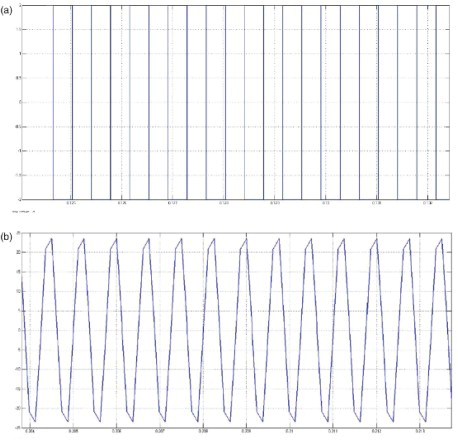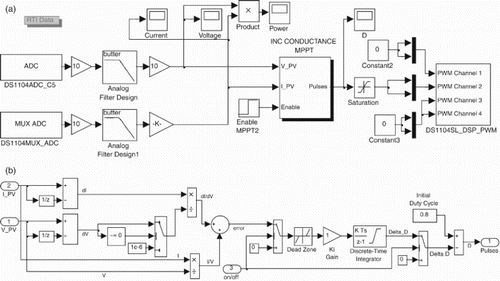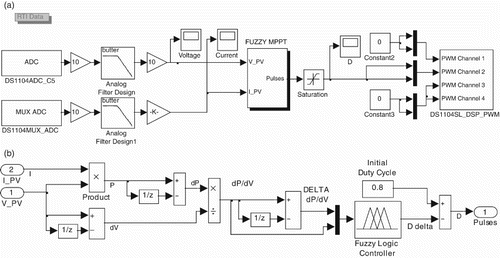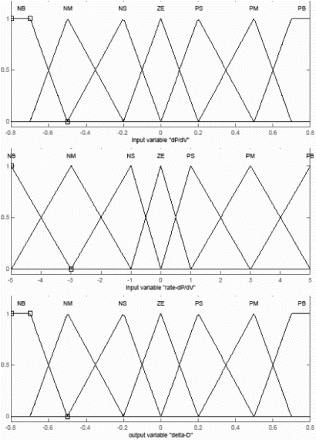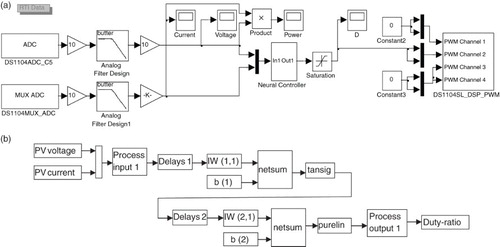Figures & data
Table 1. Rule base for input and output membership functions.
Table 2. Buck converter parameters.
Table 3. PID parameters.
Table 4. PV module parameters at standard test conditions.
Figure 18. (a) Experimental set-up for real-time implementation of MPPT algorithms and (b) radiation and temperature sensors used for real-time simulations.

Table 5. Rule base for fuzzy MPPT system.
Table 6. MSE and regression values of training, validation and testing process.
Figure 29. (a) Response of PO MPPT with Δ D=0.1, (b) response of PO MPPT with Δ D=0.01, (c) response of PO MPPT with Δ D=0.001, (d) response of INC with PI regulator (INC-PI) MPPT, (e) response of fuzzy logic-based MPPT, (f) response of NN-based MPPT, (g) response of ANFIS-based MPPT and (h) response of proposed fuzzy adaptive PID-based MPPT.
